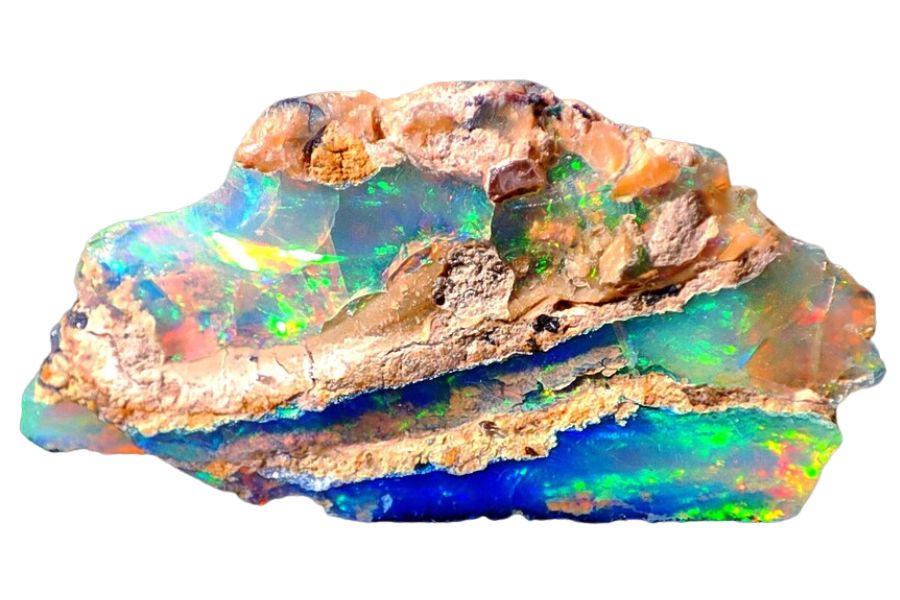Starting a search for opals can be an exciting venture into the diverse geology of this region. Learning how to find opal in Texas means gearing up for an adventure across various landscapes.
The hunt for opals takes patience and a keen eye, as these gems tend to hide in places shaped by natural forces, waiting to be discovered by those who know where to look.
For anyone keen on getting their hands dirty and wanting to learn more about where to mine gems in Texas, it’s helpful to check out our guide. It’s packed with tips and tricks for finding and collecting these beautiful minerals.
What Is Texas Opal Anyway?
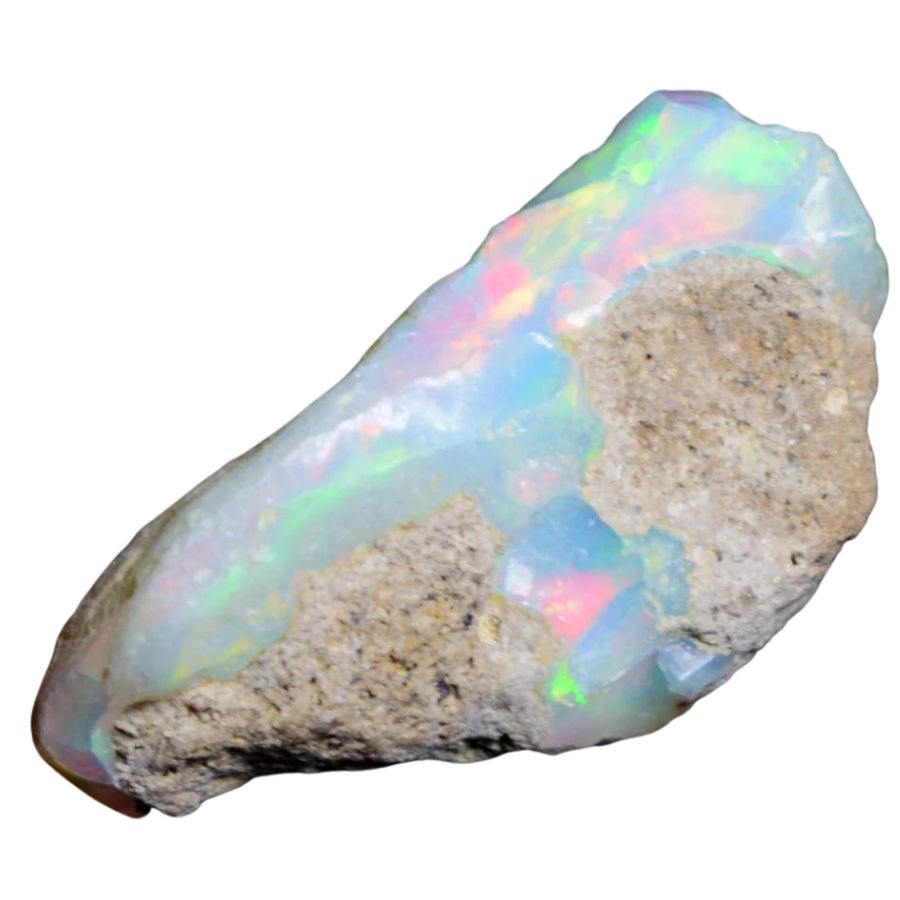
Opal is a fascinating kind of rock that’s part of the mineral family. It’s known for its ability to show many colors in the light, which can range from fiery reds and oranges to cool blues and greens.
Learning how to identify opal is quite straightforward – look for a stone that reflects a rainbow of colors when turned under a light source. This play of color is what sets opal apart from other minerals.
Opal forms in areas where ancient geothermal springs or waterways once flowed. Over time, water carrying silica (the stuff that sand is made of) trickles down into cracks and spaces in the ground, like filling a mold.
When the water evaporates, it leaves behind these hardened silica deposits, which we know as opal.
The price of opal is usually dependent on its unique colors and patterns. No two opals are exactly the same, which makes each one special. The price of opal can vary a lot, depending on the colors and how rare it is.
Some opals might be affordable for most people, while others with bright, clear colors and fascinating patterns can be worth a lot of money.
The Types Of Opal Found In Texas
Opals from Texas come in a dance of different colors and forms. Here are the types of opals you can expect to find in the state:
- Precious opal
- Common opal
- Fire opal
- The deep experience and understanding of our team about the area
- Recommendations from local groups and clubs
- How easy it is to get the a particular location
- Safety and potential hazards when collecting
- Weighing private and public locations
- The ability for both experienced and novice rock enthusiasts to find great samples
With these factors in mind we’ve been able to put together a fantastic list that just about anyone can use!
The Best Places To Find Opal in Texas
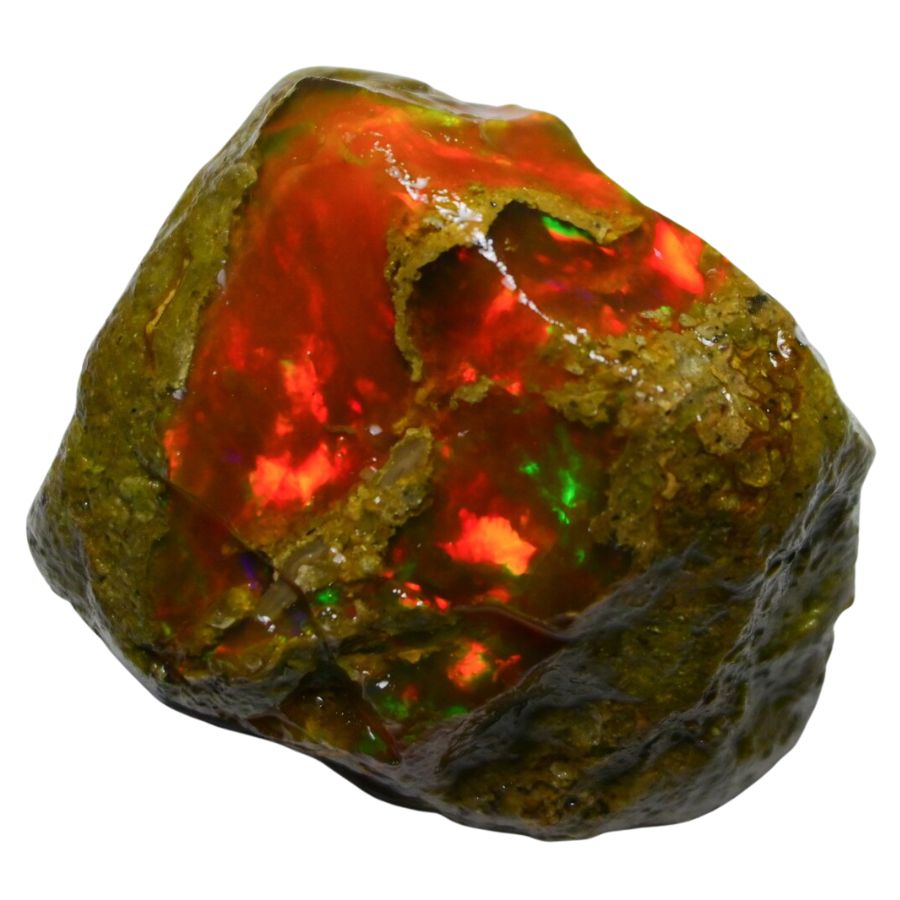
Finding opal in Texas is a real adventure that requires patience and a bit of know-how. The landscape is vast, and while opals are there, they’re not just sitting on the surface waiting to be picked up.
It takes a sharp eye and knowledge about where to uncover these hidden gems. Having the right guidance can make all the difference between coming home empty-handed or with a sparkling find.
For those who are set on discovering the unique experience of digging for these hidden gems, we have a guide to crystal mining in Texas. It’s full of information and tips to help you get started with your search.
DON'T MISS OUT ON ANY GREAT FINDS!
While you're out searching for Geodes you're going to find a lot of other interesting rocks and minerals along the way. The last thing you want to do is toss out something really interesting or valuable. It can be easy to misidentify things without a little guidance.
We've put together a fantastic field guide that makes identifying 140 of the most interesting and valuable rocks and minerals you will find REALLY EASY. It's simple to use, really durable, and will allow you to identify just about any rock and mineral you come across. Make sure you bring it along on your hunt!
Alpine
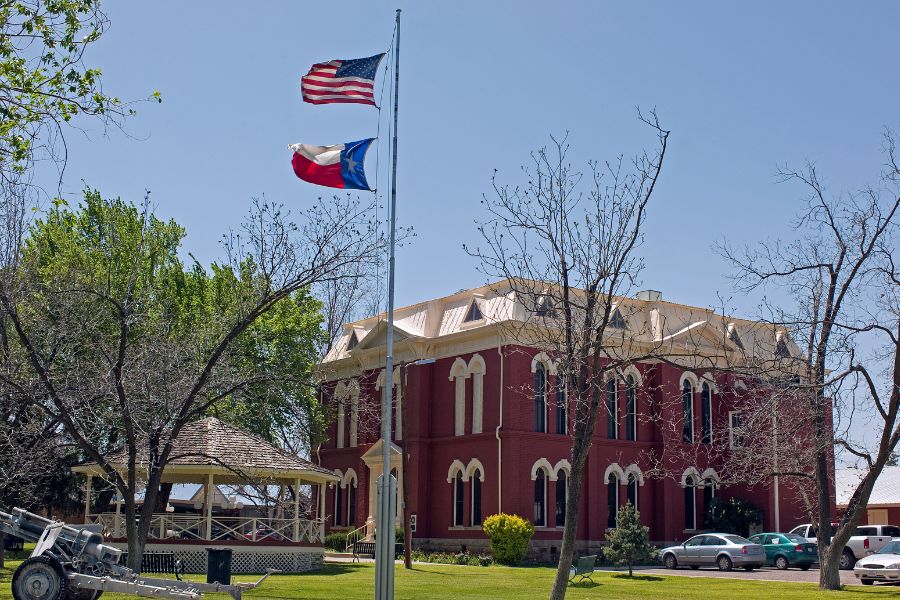
Alpine is nestled in a valley at the foothills of the Davis Mountains, offering a unique mix of desert and mountain landscapes. It boasts rolling hills, wide-open skies, and an array of vibrant desert plants.
This area is a patchwork of rugged terrain, with elevations that provide a variety of different views and experiences. The geology here is diverse, featuring volcanic rocks from ancient eruptions and a variety of minerals that hint at a complex geological history.
The region’s layers of sedimentary rock tell stories of times when this area was covered by seas and lakes, leaving behind rich fossil beds.
There are igneous rocks in the higher elevations, and throughout the area, there are signs of the tectonic movements that shaped these mountains. For rock collectors, this means a chance to find a range of specimens, from colorful agates to interesting fossils.
When planning to collect rocks in this region, make sure that you know the rules. You can check with local authorities like the Texas Parks and Wildlife Department to get up-to-date information on what can be collected and where it’s legal to explore.
Where we found opal in Alpine
When exploring where to mine for opal in Alpine, you’ll encounter a terrain that’s a blend of rocky outcrops and desert landscapes. Opals can be unearthed at several notable spots like Ritchie Ranch and Woodward Ranch.
Freer
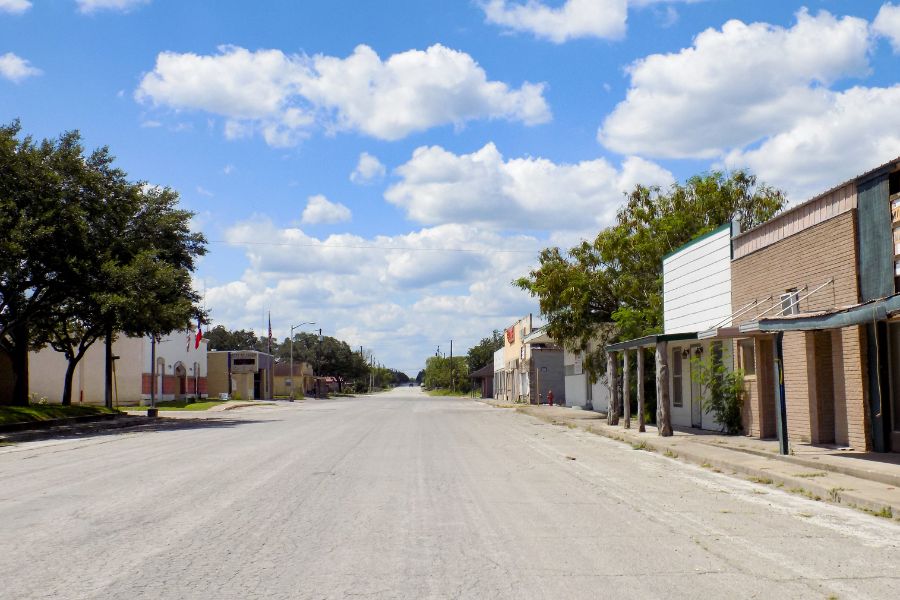
Freer sits on a flat to gently rolling terrain with an arid climate that’s typical of a semi-desert. The area is known for its brush country, where mesquite and prickly pear cacti are common sights.
Geologically, it’s part of a region characterized by sedimentary rocks, such as sandstone and shale, which tell the story of an environment that was once very different – likely a shallow marine setting eons ago.
This is evidenced by the fossilized remains of ancient sea life found within these stone layers. The soil here is a mixture of sand and clay, supporting the scrubby vegetation that thrives in this dry landscape.
Where we found opal in Freer
Fire opal has been discovered in Freer, adding to the allure of the area for rock enthusiasts. This vibrant variety of opal can be found on Cedro Hill, a location that provides the right geological conditions for its formation.
Christmas Mountains
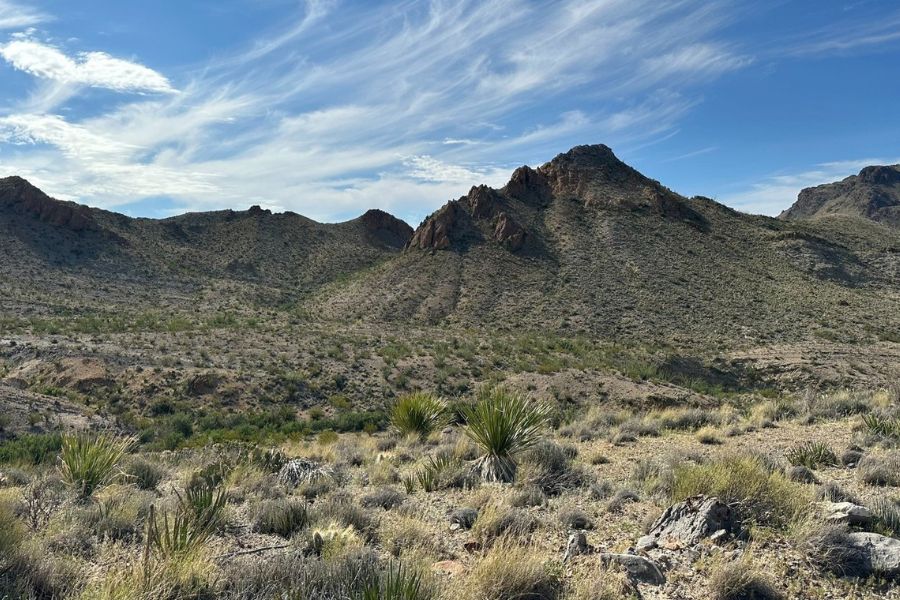
The Christmas Mountains are known for their rugged and scenic landscape. This area is a range of mountains that rise abruptly from the surrounding desert floor, creating a striking visual contrast.
The geology of these mountains is complex, with a mix of volcanic rocks, such as basalt and rhyolite, which hints at the area’s volcanic past. The hills are covered with a variety of desert shrubs, and the mountains feature steep slopes and rocky cliffs.
These geological formations provide a haven for a diverse array of plants and animals and offer numerous opportunities for outdoor activities and rockhounding.
Where we found opal in the Christmas Mountains
The Christmas Mountains harbor a variety of rocks and minerals, including Texas opal. This opal is typically found in areas where volcanic activity has occurred, which is evident in the mountains’ terrain of rugged lava flows and ash beds.
Edwards Plateau
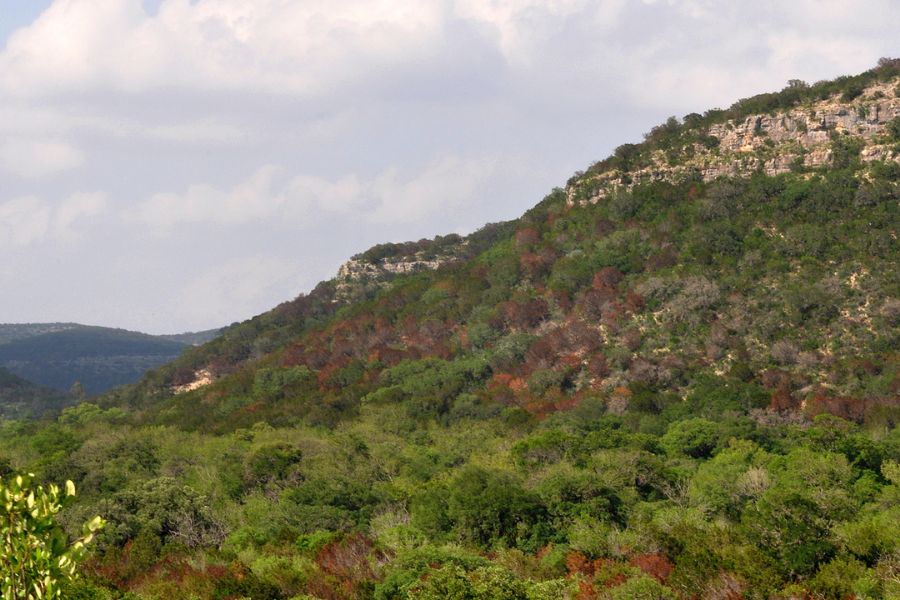
The Edwards Plateau is a region of rolling hills, broad valleys, and a rocky landscape that sits above a vast limestone foundation.
This geological layer is part of a larger area known for its karst topography, characterized by numerous caves, sinkholes, and underground streams that have formed due to the dissolving rock.
Meanwhile, the plateau’s land is a mix of grasslands and wooded areas, providing a diverse habitat for wildlife.
The limestone bedrock of the region contains fossilized remains from a time when the area was covered by a shallow sea, making it a spot of interest for both geologists and paleontologists.
Where we found opal in Edwards Plateau
Opal in the Edwards Plateau area is usually found in places where water has flowed through the limestone, leaving behind silica-rich solutions that solidify into opal. These spots are often along hillsides or in the beds of dry creeks where water once ran.
Quitman Mountains
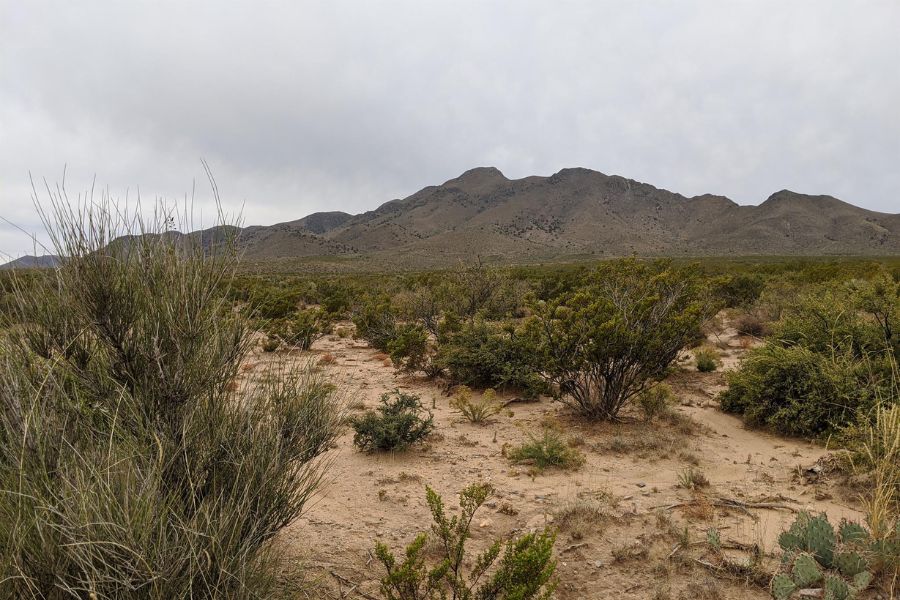
The Quitman Mountains feature a rugged and elevated landscape, with peaks that offer expansive views. They are part of a larger range that includes valleys and steep slopes, characterized by a variety of rock types.
Geologically, these mountains consist of igneous and sedimentary rocks, indicating a history of volcanic activity and layered deposits from water bodies that once existed there.
The area is dotted with a variety of shrubs and hardy desert plants, adapted to the mountainous and semi-arid climate. The diverse rock formations provide a canvas for studying the earth’s movements and changes over time.
Where we found opal in Quitman Mountains
Knowing how to find opal in Texas means looking for the right geological clues, like areas with past hydrothermal activity which is typical for opal formation.
The rocky slopes and occasional flatlands of the Quitman Mountains are the kinds of places to examine.
Other Great Places To Find Texas Opal
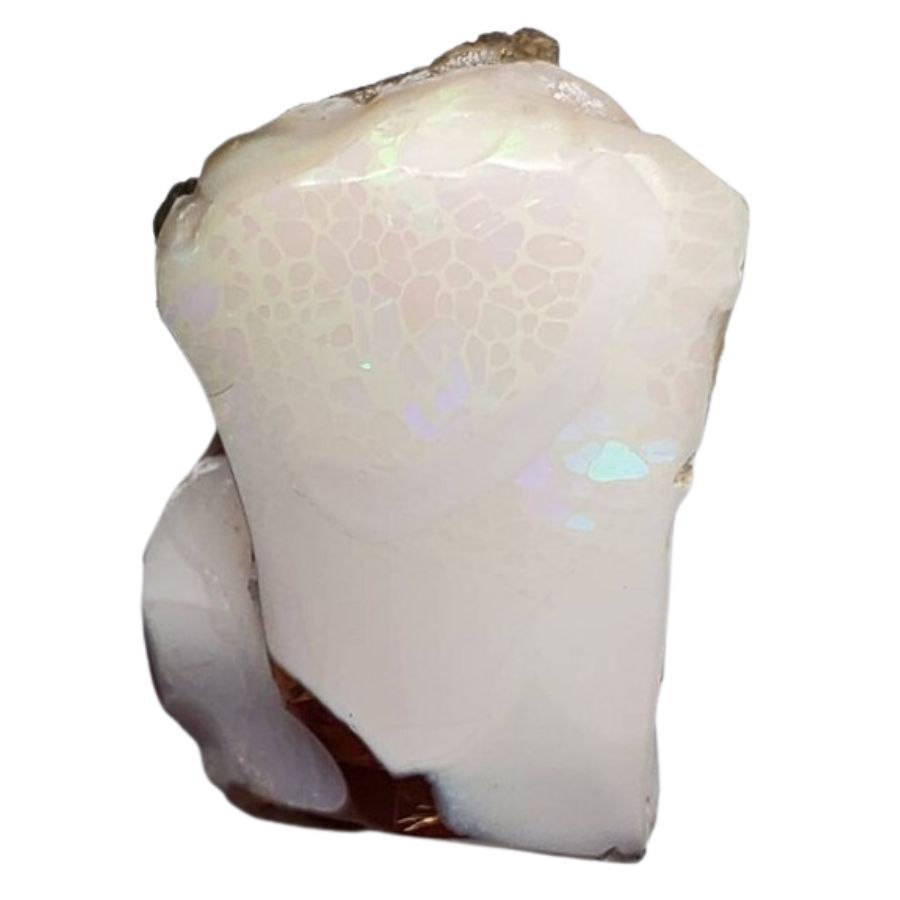
Texas is home to a variety of spots where opal seekers can try their luck. From the sun-baked earth of the west to the rolling hills in the east, these areas offer exciting possibilities for discovery.
Below is a list of areas known for opal hunting that provide the right conditions for these gems to form.
Our recommendations by county
| County | Location |
| Baker | Swayze Creek |
| Harney | Burns area, Silvies Canyon in Myrtle Park |
| Jefferson/td> | Madras area, Fulton Agate Beds |
| Jefferson | Round Butte Cinder Pit |
| Lake | Glass Buttes |
| Lake | Plush area, Hart Mountain |
| Lane | Hobart Butte |
| Malheur | Lake Owyhee State Park |
| Malheur | Succor Creek |
| Morrow | Opal Butte |
| Wasco | The Dalles, Chenowith Creek |
Common Opal-Hunting Questions
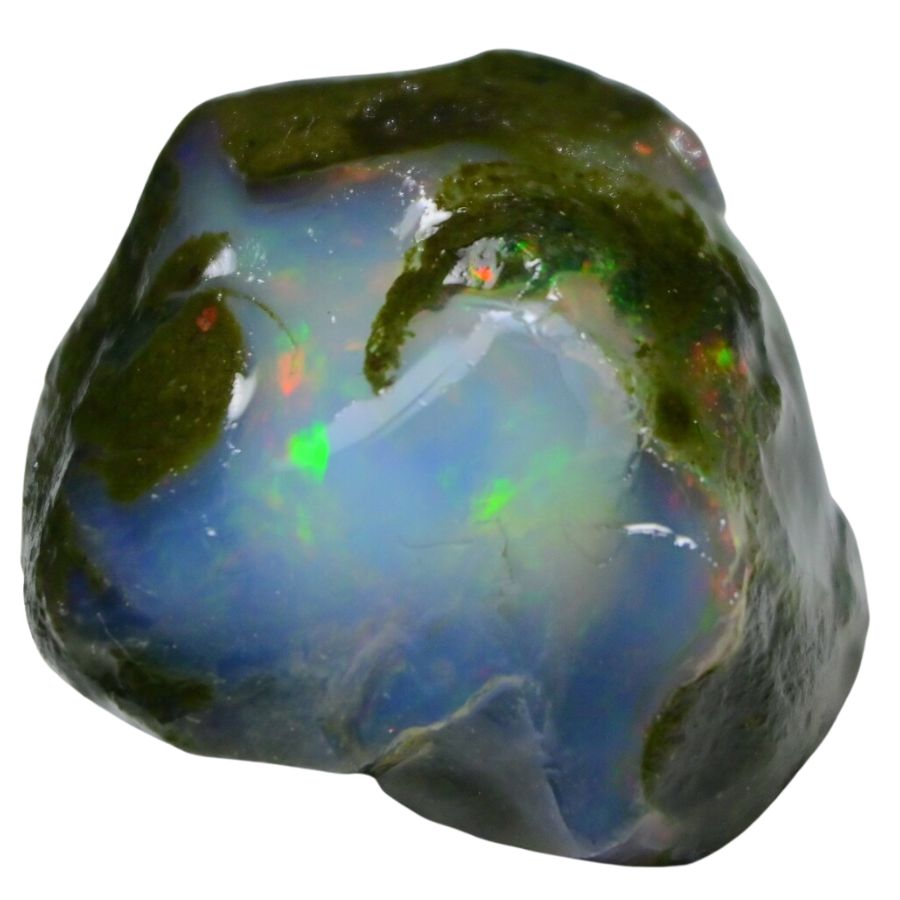
There are certain things you need to know if you’re planning on searching for opals in Nevada. We’ll provide tips and information to make the search for Nevada’s hidden gems as rewarding as possible.
Is it illegal to collect opal in Texas?
In Texas, the laws about collecting opal – and other rocks and minerals – depend on where you are.
It’s not illegal to collect Texas opal if you’re on private land and have the landowner’s permission. This is the easiest way to go about it, as long as you respect the owner’s rules and the land.
However, if you’re on public land, the rules change. National parks, state parks, and some other public lands are off-limits for collecting.
It’s important to check the local laws before you start. For example, areas managed by the Bureau of Land Management might allow limited collecting for personal use with hand tools only.
Remember, if you plan to collect on any public lands, you must follow the specific regulations set for that area to make sure your rockhounding adventure is both fun and legal.
The Best Places To Buy Opal In Texas

Texas offers a variety of shops where enthusiasts can find beautiful opals to add to their collections. These stores are known for their quality selections, providing a range of options for anyone looking to purchase this unique gem.
The list that follows highlights some of the best places to find opals in the state:
- Silver Pyramid – 101 S Coit Rd #102, Richardson, TX 75080
- Caves Jewelry Inc – 1020 E Main St, Midlothian, TX 76065
- Crystal Works – 908 W 12th St, Austin, TX 78703
- The Texas Silver Rush – 229 W Main St, Fredericksburg, TX 78624
- Juliet’s Jewels – 315 W Sycamore St, Denton, TX 76201

